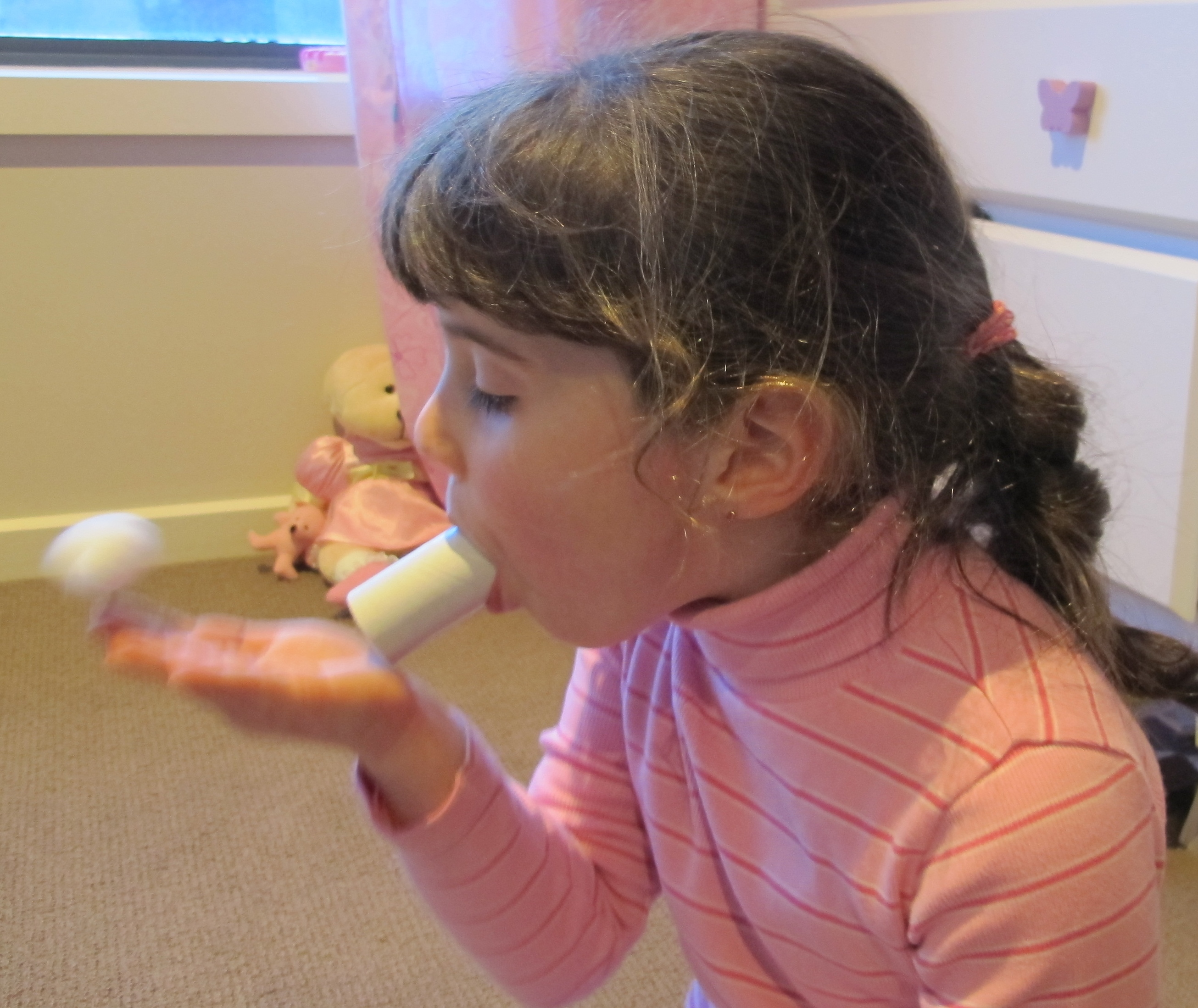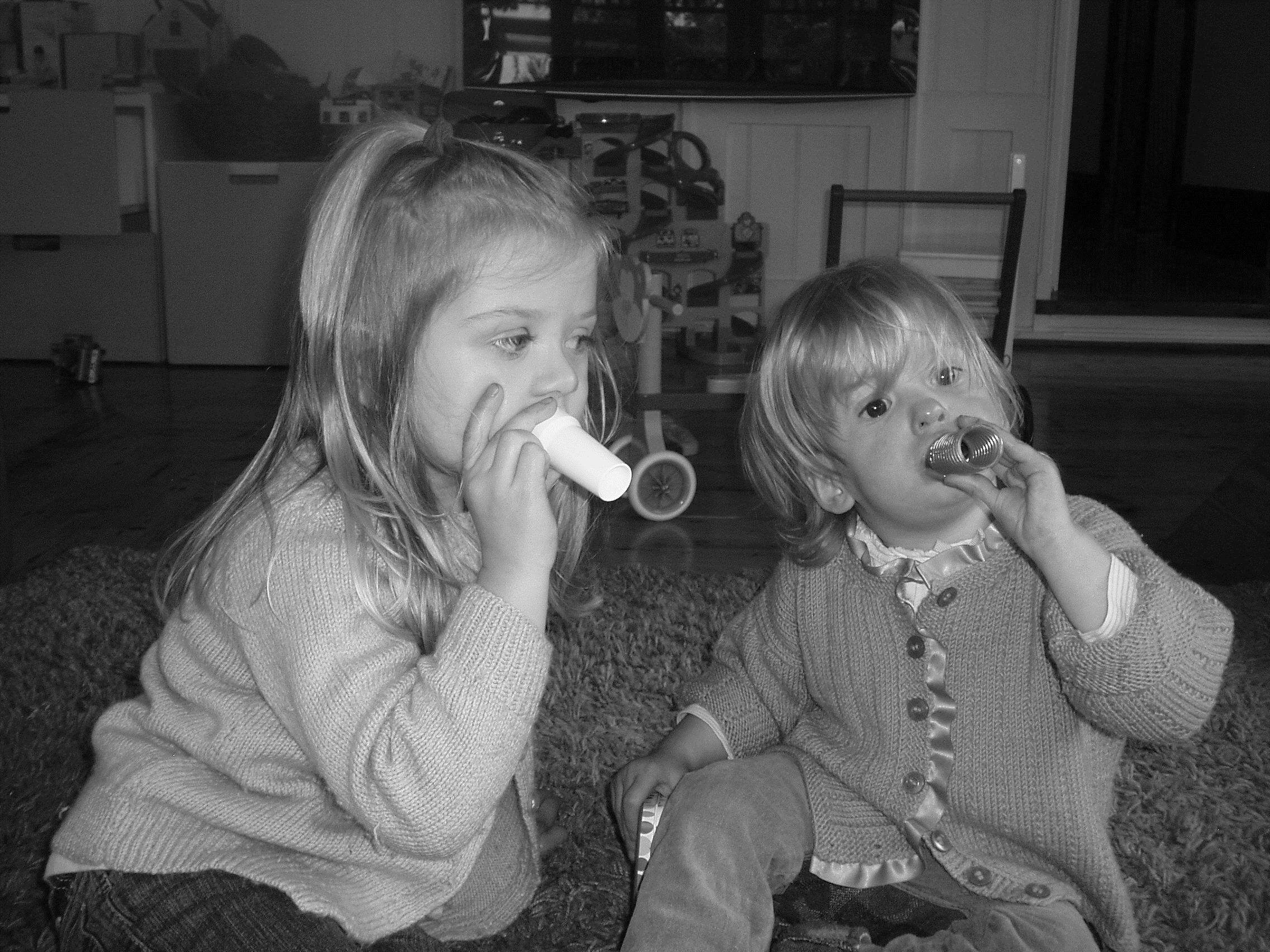Forced Expiration Technique (FET)
An outline of the technique is detailed in FET section
How to perform the technique?: (see FET video)

Prescription
Huffs are described as either ‘low volume’ or ‘high volume’ depending on where the sputum is and from where forced expiration is initiated.
Low-mid lung volume huffs (ie smaller breaths) may help to access and shift sputum from distal airways; a high volume huff (larger inspiration) may be more useful where the sputum shift occurs in the upper airway moving the sputum into the mouth to be expectorated.
This is a difficult concept for many children when learning the technique. Huffing from any volume can be used providing it reaches the volume necessary to access secretions.
Physiotherapists can start to introduce the concept of huffing during the toddler years.
Huffing tips
A useful description for children is that huffing is like fogging up a mirror and can be easy to teach a young child
Use cottonwool or tissue paper characters to encourage huffing through a huff tube to ‘huff’ the lighter objects away
There should not be any harsh noises with huffing. If this happens, the patient hasn’t used the ‘O’ shape or may be squeezing too hard to push the air out
Keeping the glottis open is critical for effectiveness. This can be done by placing the tongue behind the lower teeth and performing the forced expiration manoeuvre
Keeping the glottis open is critical for effectiveness. This can be done by placing the tongue behind the lower teeth and performing the forced expiration manoeuvre.
Learning to use the different breath volumes in huffing is a very important skill for the child/adolescents to learn
For patients with unstable or floppy airways, huffing into a PEP mask can be very useful to prevent airway collapse
Any patient, either new to the FET, or who has been using the FET for a long time, still needs regular review or refinement of this technique









